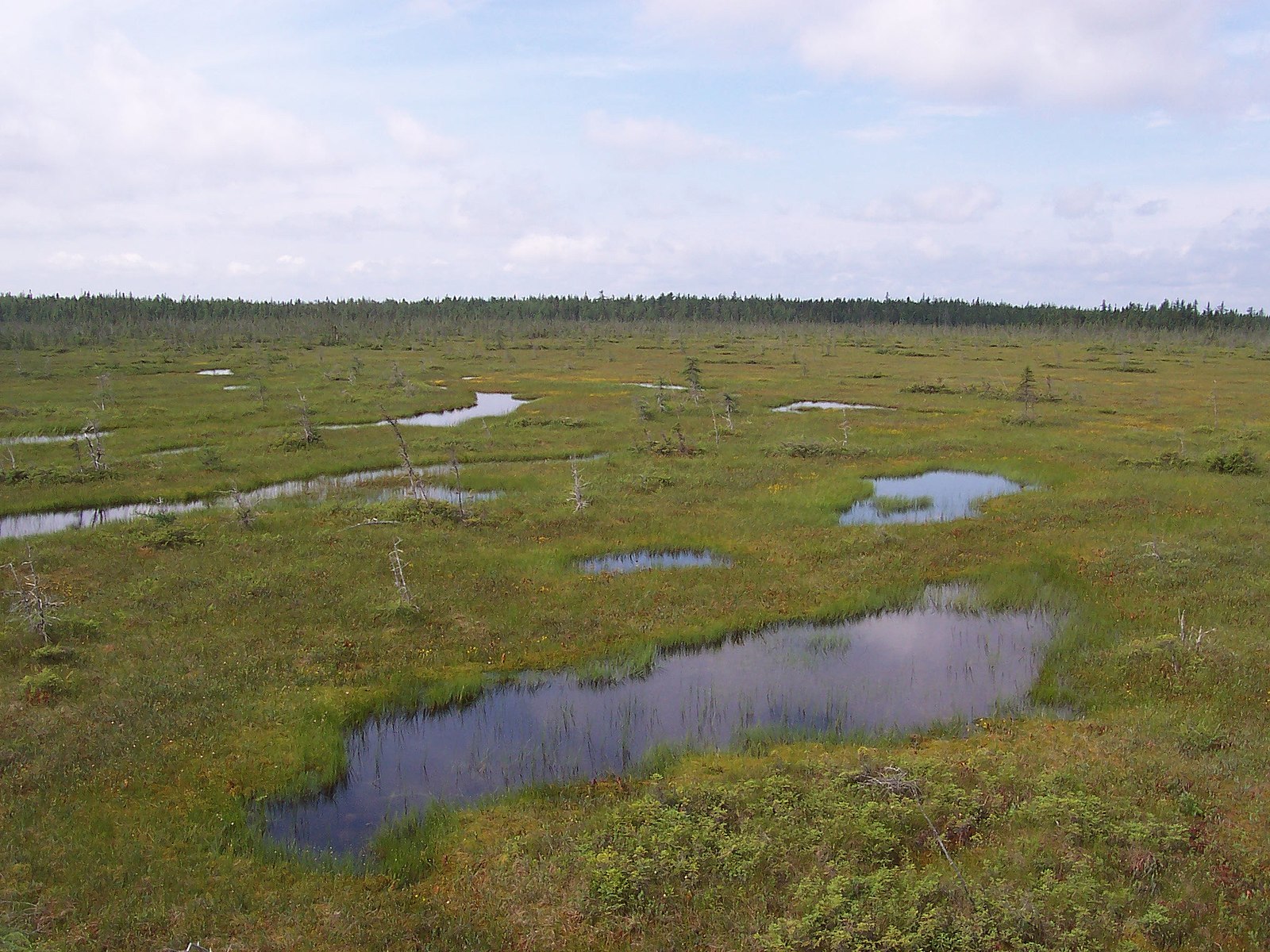The forest floor is made up of plants that pair with fungi that help them acquire nutrients like nitrogen and phosphorus. In fact, scientists predict that 90% of all plants form symbiotic relationships with fungi. Fungi can be found throughout the world, but they are sometimes limited in some regions with an unsuitable pH. The vast majority of fungi like to carry out their life cycle in pH environments that are slightly acidic. You can find most fungal species fruiting from substrate with a pH value from 5.5-7. As you may know, some ecosystems can get much more acidic. Take bogs for example.
A raised bog called Viru Bog in Lahemaa National Park, Estonia.
Bogs represent a diverse ecosystem type. Just briefly researching bogs, I was blown away by the ecosystem’s diversity. There are nearly 20 types of bogs that can be found here on Earth. In many cases, bogs form when water becomes logged in an area with an acidic substrate. Sphagnum moss usually dominate these nutrient poor, water logged regions, and over time, their debris piles up. Amazingly, these ecosystems can reach a pH value of 3.6! In conditions like this, the high acidity slows the activities of fungi and bacteria. This leads to even more buildup of peat moss, ultimately creating new substrate for bog adapted species to colonize. Over the last 100 million years, many plants and fungi have evolved adaptations to cope with the conditions present in these acidic environments.
Sphagnum with northern pitcher plants at Brown's Lake Bog, Ohio.
Plants with specialized mycorrhizal fungi like orchid and ericoid mycorrhizas can still can be found in bogs, but plants symbiotic with more general, ancient, arbuscular mycorrhizal fungi (AMF) are rarer in these ecosystems. AMF are by far, the most widespread plant symbiote found in terrestrial habitats. If AMF are more vulnerable to the low pH than higher fungi, how did plant lineages that formed mutualisms with AMF adapt in these acidic ecosystems? Well, instead of sending sugars below-ground to feed the organisms living in their roots, plants began sending sugars to the surface. Over millions and millions of years, specialized structures that once formed leaves, stems, and flowers shifted, forming mechanisms that trap and digest nutrient rich insects. By sending sugars to the surface, plants acquired nutrients like nitrogen and phosphorus by attracting and trapping insects.
Sarracenia purpurea, a pitcher plant inhabiting a bog in France.
Nature goes hand-in-hand with time. Left alone long enough, the species adaptations can become as diverse as they are beautiful. With less bioactive saprotrophic fungi in the acidic environments, decomposition rates slow, causing the accumulation of peat. This in turn creates more habitat for bog species to latch on to. The limited function of AMF in these environments has changed the evolutionary trajectory of bog adapted plants. Instead of investing sugars to underground symbionts, plants adapted a carnivorous ecology. Sugars allocated to the surface attract insects, which fall victim to plant structures fine-tuned to trap and digest the nutritious invertebrates. Organisms that create energy using our nearest star can distribute those sugars beneath the forest floor, to their mycorrhizae, or to the bog surface, crowded with insects. Plant strategies are quite diverse and nature as a whole is fantastic.
[Link 1]






